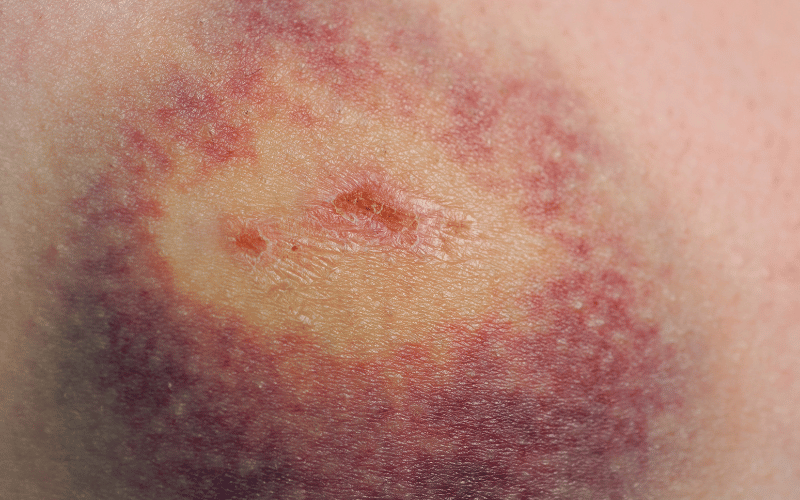Symptom 3: Skin Changes

Our skin, often touted as the body’s largest organ, acts as a mirror reflecting our internal health. In Cushing’s syndrome, this reflection can reveal a myriad of alterations. From thinning and easy bruising to an unusual susceptibility to infections and delayed healing, the skin becomes a canvas displaying the repercussions of excessive cortisol.
The skin might begin to feel unusually delicate, almost paper-thin in some places. This isn’t just a tactile anomaly. It’s a testament to the skin’s reduced capability to defend and repair. With an uptick in cortisol levels, collagen production gets disrupted. Collagen, the protein backbone of our skin, when affected, reduces the skin’s strength and elasticity, leading to this fragility.
Then there’s the case of the unexpected and inexplicable bruises. Minor bumps, which wouldn’t have caused any discoloration previously, now result in noticeable bruises. This happens because the excessive cortisol weakens the tiny blood vessels in the skin. Even the slightest pressure can cause them to break, leading to these bruises.
Remember that small scratch that took unusually long to heal? Elevated cortisol is the culprit again. It interferes with the skin’s normal repair mechanisms. Thus, minor cuts, insect bites, or scrapes tend to stay longer than one would expect, emphasizing the compromised healing capabilities of the skin.
These changes, while noticeable on the skin, are indicative of the deeper turmoil brewing inside. The skin’s manifestations are just the tip of the iceberg. They hint at the larger issue of a disrupted hormonal balance, a signal that shouldn’t be ignored. (3)